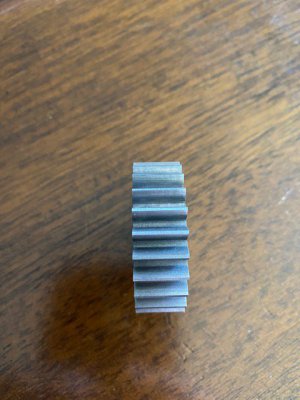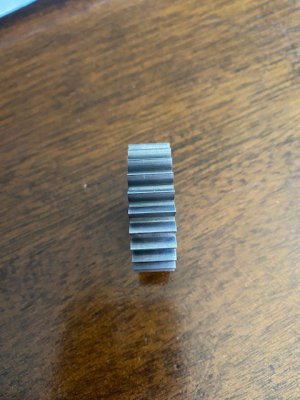Hi all....I cut a gear last night and when I finished it I could see that the top land of the teeth became thinner and thinner in width as I went around the gear. Hopefully you can see that on the photos I've posted. My question is...what would cause this? I thought it may have been because I wasn't exactly on center, but when I got to the original staring point after the 1st cut everything seemed fine...with the machine off the cutter passed easily through where I had already cut.
Any thoughts, opinions, or suggestions would be greatly appreciated. Thank


Any thoughts, opinions, or suggestions would be greatly appreciated. Thank



